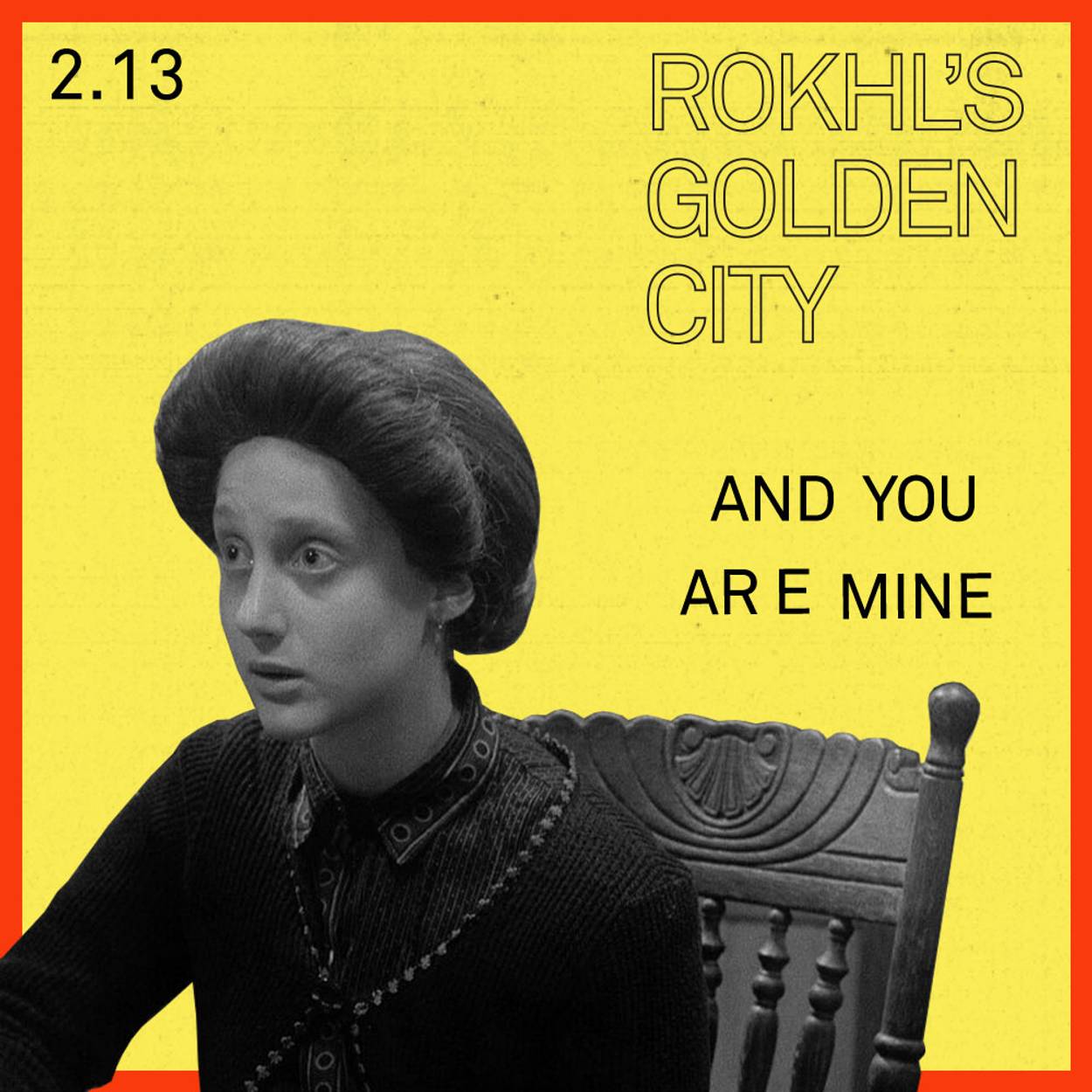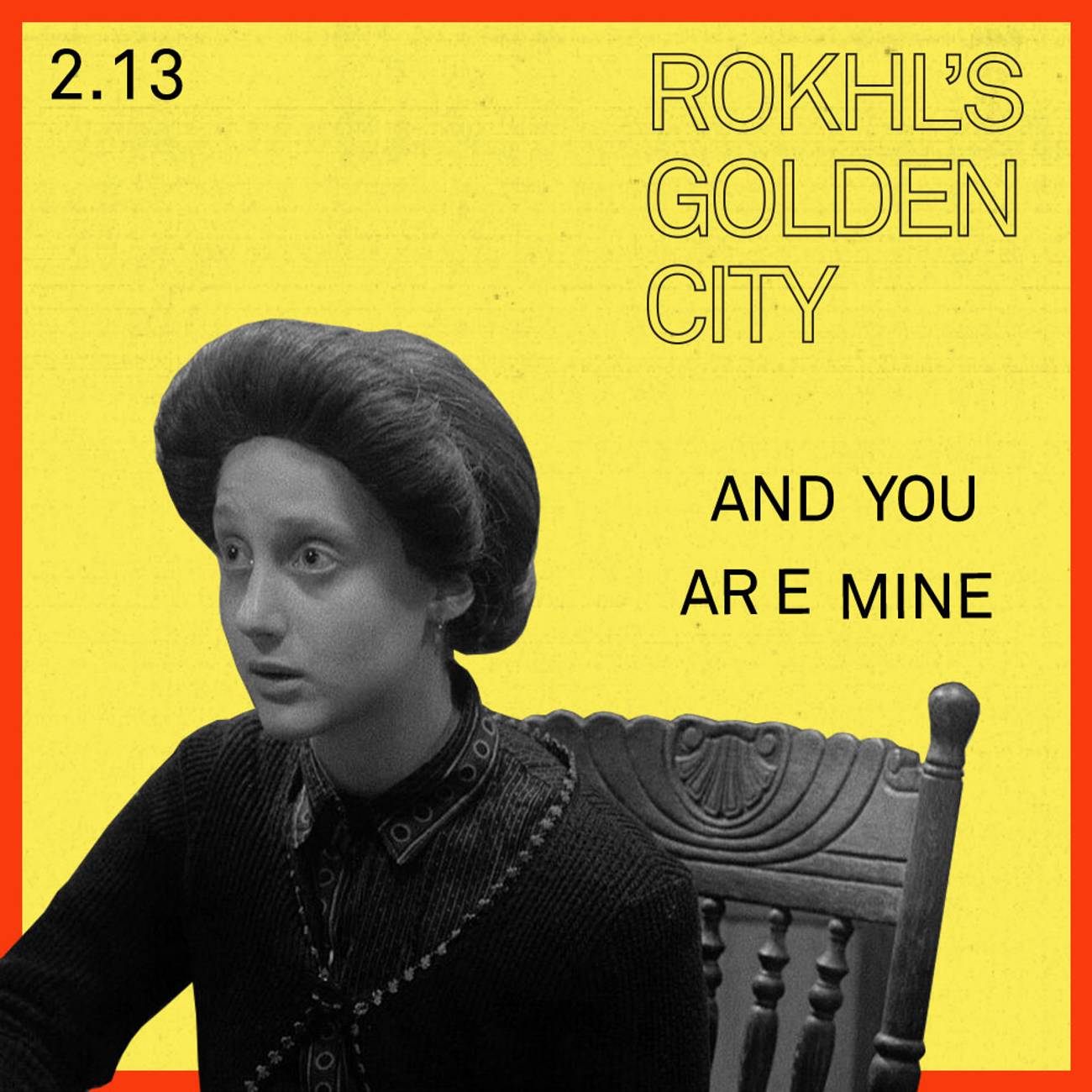Love Potions
Yiddish tales of romance and magic




One of the very nice things about my work is that I get quite a few lovely books in the mail. One of my most eagerly awaited books arrived at the very end of 2022: My friend Daniel Kennedy sent me a slim volume of Anna Margolin short stories, During Sleepless Nights. These are Kennedy’s new translations, published under the Farlag Press imprint.
Margolin is known primarily as a Yiddish poet, one whose work, as Kennedy says, is “dark, sensual, and transgressive.” The stories in During Sleepless Nights were published in periodicals, like so much of modern Yiddish literature, and until now, have never been collected in a volume or translated into English. Margolin’s body of work is relatively small and she stopped publishing in 1932. So finding “new” work of hers in 2023 is cause for celebration.
The first story is called “From a Diary.” It originally appeared in Di tsukunft magazine in 1909, under the pen name Khave Gross. It’s really somewhere between a story and a poem, a series of brief diary entries by a young woman in the midst of a disintegrating love affair. Each entry documents her inner turmoil as she turns her gaze from her erstwhile lover, to his new lover, and then back to her own life. She decides she must confront the other woman.
“I feel no shame, no guilt, only love.
“It’s my sole response, my sole defence: I am in love—I am lovesick. Not allowing myself to be deceived is making me ill, not being able to forget, even when we are together …
I’ll do what I must because I can’t do otherwise.
I can’t.”
Modern medicine can cure so many of our ills, but there is still no cure for lovesickness. The affair that unfolds in these diary entries feels so painfully modern, so relatable, I only wonder if she edited out the solitary tarot card readings that pair so well with journaling about one’s erotic fixation.
Margolin’s sparse prose vibrates between romantic obsession and mystical wanderlust. She is lovesick, but she is also a poet, elevated by her awe of mankind and for its creation. “I will prove it with my life, my brain, my nerves … all of my force I will devote to my work.” In a few short pages, Margolin explores the dilemma of romantic love, the kind that burns so addictively while also threatening to burn you alive.
The shifts between the earthly and the mystical in “From a Diary” call to mind the feverish fixation of The Dybbuk’s Khonen. He is a poor yeshiva student in love with the only daughter, Leah, of a rich man, Sender. Khonen, too, is lovesick, tortured by the idea that Leah’s father will find Leah a wealthy, but unworthy husband.
When a fellow yeshiva student accuses Khonen of reciting incantations and spells, Khonen admits it all. But why is he doing it?
“I want …
I want to find a clear and sparking diamond …
I want to find the rays of the Third Heavenly Temple,
The Third Divine Emanation …
The sphere of Tiferet—Beauty.
I want … Yes! I still have to get two small barrels of gold coins … For the man who can only count money.”
(from Joachim Neugroschel’s translation of The Dybbuk)
Rereading this passage, I found Khonen’s abrupt shift to takhles (practicality) almost comical. He has been immersing himself in the dangerous waters of Kabbalah, purifying himself endlessly and risking his soul to wield its power. But all he can ask for is a gold coins, and “small” barrels at that? There is something of an ironic bathos about this plunge from mystical heights to “two small barrels” of gold coins. If Khonen is really tapping into these forbidden powers, why not just use it to bend Sender’s will to his own?
Here we see Khonen’s friend follow him to the bathhouse, where he voyeuristically watches Khonen performing his forbidden magical purifications. (The film adaptation strongly suggests that the friend may also be jealous of Khonen’s fixation on Leah.) The ominous Messenger comes along to warn that Khonen is seeking help from Satan (or samekh mem, as he is known euphemistically in Yiddish) to fulfill his lustful desires. Well, nobody ever said that love makes you smarter.
Whenever I speak about the topic of Jewish folk magic, people always ask, “but is it allowed?” The answer depends on who’s doing it and why. In the scene at the synagogue where Khonen’s friend Henekh asks him if he’s really performing forbidden magic, Khonen’s confession of “forbidden” love magic is juxtaposed with a very different kind of magic. A woman rushes into the synagogue, flings open the doors of the Ark, and shouts to God to aid her dying daughter. She then pays the men in the synagogue to gather a minyan and recite psalms for her daughter’s recovery. Are these acts any less “magical” or less audacious than Khonen’s kabbalistic manipulation of the sacred names of God?
It would be a lot easier if magic could be obtained as easily as a new broom. That is the promise of the enchanted object or potion. The 1975 film Hester Street is a somewhat gritty, unmagical story of an Eastern European Jewish woman who follows her husband to the United States, only to find that he is already in love with another woman. Despondent at her situation, the woman, Gitl, looks for extraordinary help. She invites a peddler into her apartment to show off his wares. In a delightful scene, the peddler tries to entice Gitl with his merchandise, but she is too shy to say what she really wants: a love potion. I think it’s significant that this moment comes precisely at the midpoint of the movie. Gitl is attempting to take control of her life, but she can only approach the problem with the remedies she knows from the old world. Before she can buy the love potion, however, her more sophisticated, more American neighbor, intervenes. From now on, Gitl must redirect her life under her own power.
On the one hand, anyone who sees Hester Street has surely wondered, even if just momentarily, what was in the peddler’s bottle of “love potion,” or libe tropns, as he calls it. I would imagine it was probably a healthy dose of alcohol with whatever else might have been on hand. Love potions, however, were not always so benign. I recently learned about the late-19th-century Balkan herbalist, witch, and convicted murderer Baba Anujka. In addition to her healing work, Baba Anujka became well known for her “love potions.” These potions relied heavily on arsenic, and were sold to women looking to get rid of their husbands. Though Anujka wasn’t Jewish, I have no doubt there were women in Jewish shtetls also providing herbal remedies and “love potions” to other women, perhaps under magical guises. We only know about Baba Anujka because her remedies happened to result in the deaths of somewhere between 50 and 150 victims.
Not everyone needed a love potion, for love or murder. Jewish women who were looking for love charms needed to look no further than the next wedding to provide a little love magic. As a liminal life event, weddings are both times of danger (bride and groom must be protected from demons the night before) as well as moments of extraordinary magical power. There are innumerable folk traditions about the segules (charms) and special brokhes (blessings) a bride or groom may bestow. For example, if a woman wanted a segule to be married, she could hold the bride’s jewelry while she was under the khupe. It’s not so different from the American segule of catching the bride’s bouquet in order to be the next one married.
As usual, in Yiddish there is a certain irony and perhaps even distrust of romantic love and its kholile nisht far undz gedakht God forbid close companion, lust. In his wonderful scholarly history of Jewish folk medicine, A Frog Under the Tongue, historian Marek Tuszewicki discusses how physical infirmities were understood to reflect spiritual defects. Acne was believed to be caused by impure sexual desires, giving rise to a number of very colorful Yiddish terms for acne that he lists, such as zakhtsianke (lust rash, from the Polish), ahave-rabe-prishtshes (a pun on “great love spots”), yester-hore-blotern (evil inclination abscesses) and tayve kretslekh (urge scabies).
In the excellent volume called Yiddish Folktales, editor Beatrice Silverman Weinreich brought together a diverse range of short stories collected in the late 19th and early 20th centuries. In the section on humorous tales, she includes one called “The Love Potion.” In it, a very poor husband and wife have too many daughters and not enough money. Finally, the wife is about to give birth to a son. The husband takes off to beg for alms, fearing that he does not have enough money for the bris and its celebration feast. He then disappears without a trace. In the meantime, unburdened of this shlimazl, the wife’s luck immediately turns for the better. She acquires enough money to move her family to a better home and becomes known for her philanthropy. And, wouldn’t you know it, her nebekh husband ends up at her house for shabes, looking for a handout and a meal, not recognizing his own wife! He eats his fill and drinks so much wine that she invites him to stay the night. He wakes up thirsty from the salty food, looking for water. Instead, his (still unrecognized!) wife hands him a glass of wine, the titular Love Potion.
“‘Come here,’ she said. ‘I’ll give you something to drink.’”
When he asks her what it is, she replies with a Yiddish paraphrase of a very famous line from the Song of Songs, ani l’dodi v’dodi li:
“The drink is wine
And you are mine
And I am thine.”
Thus the two are reunited as husband and wife.
Real life is hard and dangerous and filled with too many kinds of heartache, as is amply attested in modern Yiddish literature. I find it so wonderfully funny that in the Yiddish worldview, the real “love potion” can only be shabes wine shared between two strangers who are already married. It holds out the reassuring possibility that even shlimazls who lose love may find it again.
More from Vilne: Following on from my last column about travel guides to Vilne/Vilnius, the upcoming season of the Fortunoff Video Archive for Holocaust Testimonies podcast, “Those Who Were There” will focus on the city of Vilne: “a once thriving center of Jewish life and culture.”
ALSO: My friend Sandy Fox has just published her highly anticipated new book, The Jews of Summer: Summer Camp and Jewish Culture in Postwar America. Join her and every other Jew in Brooklyn to celebrate like it’s July in February. More than a book party, this will be an “experiential event” featuring “elements of Jewish summer camp life from the 1950s through the present, from arts and crafts and gaga to Hebrew and Yiddish circles, Jewish dancing and singing, Maccabiah—even Tisha B’Av.” Feb. 23, 7 p.m. Ticket price includes a copy of the book! Tickets and more information here ... The journal Sapir will present a conversation with Rokhl Kafrissen (me) and Sapir Associate Editor Felicia Herman. “Join us to dive deeper into Rokhl Kafrissen’s discussion of how Yiddish can continue to enrich Jewish culture in the 21st century.” Feb. 27, noon. Register here.
Rokhl Kafrissen is a New York-based cultural critic and playwright.